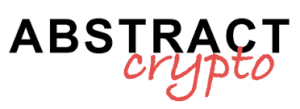A few days ago Anchorage Digital announced a new rewards program on PayPal’s PYUSD stablecoin.
Today, @Anchorage Digital is pleased to introduce stablecoin rewards on @PayPal’s PYUSD.
Earn competitive rewards on PYUSD balances in our secure custody or in our institutional self-custody wallet, Porto.
Learn more
:https://t.co/LtcmXRgnCh pic.twitter.com/0ZyoJSvAkp
— Anchorage Digital (@Anchorage) August 22, 2024
These are rewards introduced by Anchorage Digital for holders of PayPal USD (PYUSD), with rewards derived from assets held in on-chain custody or self-custody.
Anchorage Digital
Anchorage Digital is a crypto platform that allows institutions to participate in the digital asset market through custody, staking, trading, governance, and settlement services.
On the other hand, Anchorage Digital Bank is a US crypto bank with a federal charter, and Anchorage Digital also serves institutions through Anchorage Digital Singapore, Porto by Anchorage Digital, and others.
This is a company funded by major financial institutions, including Andreessen Horowitz, GIC, Goldman Sachs, KKR, and Visa, with a valuation of over 3 billion dollars.
It was founded in 2017 in San Francisco, California, but also has offices in New York, South Dakota, Portugal, and Singapore.
The rewards program
The Anchorage Digital rewards program on PayPal’s stablecoin allows institutions to earn rewards on their PYUSD balances held with the same or in their self-custody wallet designed for institutions.
The rewards are variable, so it is not possible to provide precise indications on their percentages, and they are issued by Anchorage Digital Neo to those who hold PYUSD in custody platforms or wallets offered by Anchorage Digital Bank National Association, Anchorage Digital Singapore, or Anchorage Innovations.
In the official press release of the program launch, it is stated that the program itself is not regulated by any government authority or regulatory body. Additionally, they put in black and white that there are no guarantees regarding its stability, security, or reliability.
They add:
“Participation in the Program involves intrinsic risks, including but not limited to the risk of loss of funds, lack of recourse in case of disputes, and potential volatility in the value of a stablecoin.”
These warnings do not reveal anything new, but too often they are hidden in other cases to avoid scaring potential customers. Instead, in this specific case, since it involves institutional clients, they are in fact obliged to highlight them, and this constitutes an additional element of transparency that is often lacking in other similar offers.
The stablecoin by PayPal
PayPal launched its stablecoin on Ethereum in September of last year.
Recently it was also launched on Solana.
It is a very normal stablecoin pegged to the US dollar and fully collateralized in dollars.
When it was launched, less than a year ago, it had a market capitalization of less than 50 million dollars, which rose to 150 million in November 2023, after the start of the latest bullrun.
At the beginning of 2024, it had risen to a market capitalization of 300 million dollars, but between March and April, it had even dropped to 200.
Starting from the end of April, however, it began a growth that seems to be still ongoing. This latest growth first brought it to around 400 million dollars in June, and then recently to surpass even a billion.
As of today, it is the sixth stablecoin with the largest market capitalization in the world, even though two of those that still surpass it are not directly collateralized in dollars. Therefore, considering only those that are effectively and entirely collateralized in dollars, it is already the fourth in the world.
Furthermore, the third, First Digital USD (FDUSD), has been declining since April in terms of market capitalization. Also because it risks not being compliant with the new European MiCA regulations. PYUSD, on the other hand, is compliant. And it is perhaps for this reason that from the moment MiCA came into effect, it has been growing so much.
The regulation of Anchorage for PayPal’s stablecoin
Regulatory compliance is not only one of the strengths of PayPal’s stablecoin, but also of Anchorage Digital.
It is worth noting that the CEO of Anchorage, Nathan McCauley, has stated that the rewards paid by the program will be funded with the returns generated by the underlying of PYUSD. That is, the actual US dollars (USD) collected and immobilized. Although it is not yet clear how it will work, McCauley has stated that no rehypothecation, staking, or loans are planned.
If, for example, it were only a matter of sharing with users the proceeds from the purchase of American Treasury bonds, the annual rewards would be at most a few percentage points. This too, after all, is symptomatic of a much more conservative and institutional approach by the company towards this type of offer.
It should be emphasized that Anchorage in 2021 obtained from the US Office of the Comptroller of the Currency the first, and so far only, federal authorization to become a digital asset bank.
Additionally, McCauley revealed that the program will be offered only to accredited investors. The latter enjoy a Reg D exemption that also allows them to invest in unregistered securities.


